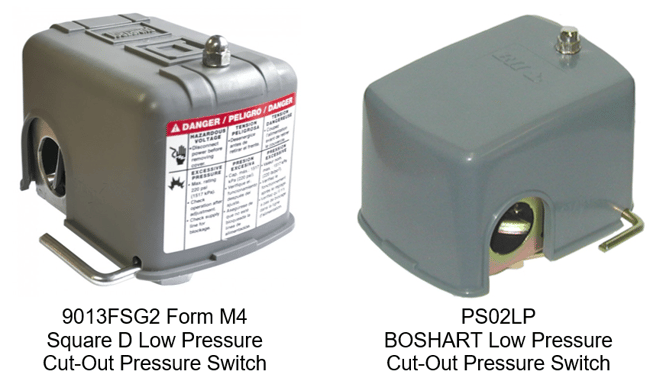Why is my low-pressure cut-out switch nuisance tripping?
Nuisance tripping of a low-pressure cut-out pressure switch can occur for the following reasons:
#1 - The cut-in pressure is set too close to the pressure tanks pre-charge. There should be a minimum of a 2-5 PSI difference.
EXAMPLE: If the switch cut-in is 30 PSI, the tank pre-charge should be 25-28 PSI maximum.
TIP: Setting a higher 5 PSI difference will reduce the risk of nuisance tripping.
Other factors to consider:
- Pressure switches are not individually tested for pressure settings, a switch with a 30-50 PSI setting could possibly be set 28-48 PSI.
- Pressure switches will sometimes stick slightly. The same switch could possibly come on with a 1 or 2 PSI difference one cycle to the next.
- Change in ambient temperature can affect the pre-charge pressure in the tank. It is common that nuisance tripping will occur when the seasons change affecting the ambient temperature at the tank location. For example, if a system is set up in the winter with a 2 PSI difference between the pump cut-in and the tanks pre-charge pressure, you may see nuisance tripping when heading into the spring or summer season. As the ambient temperature increases around the tank, the air inside the tank warms and expands increasing the internal tank pre-charge pressure, eliminating the required minimum of a 2 PSI pressure difference.
